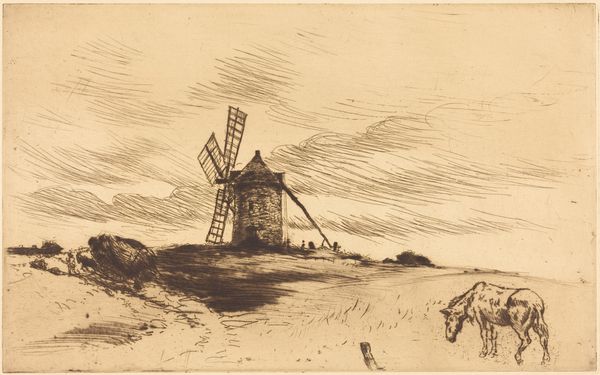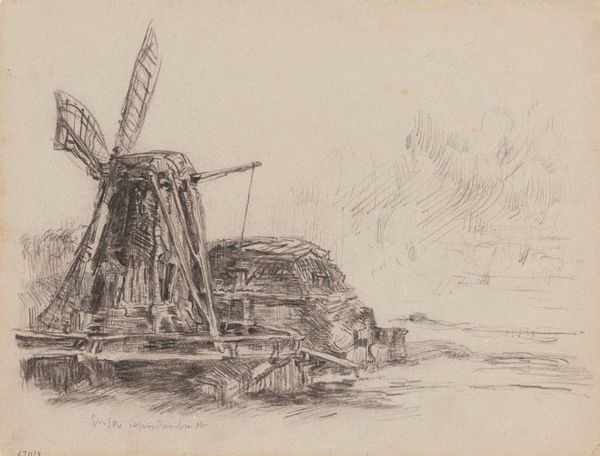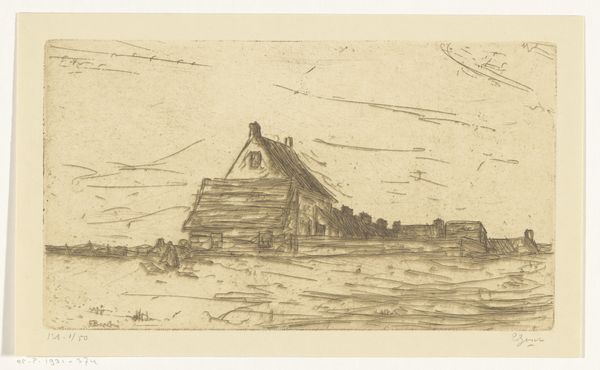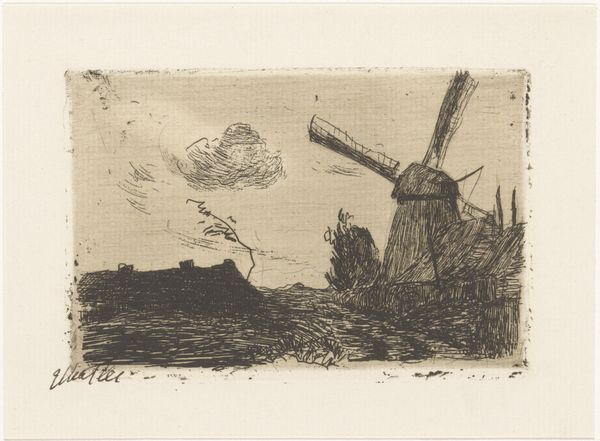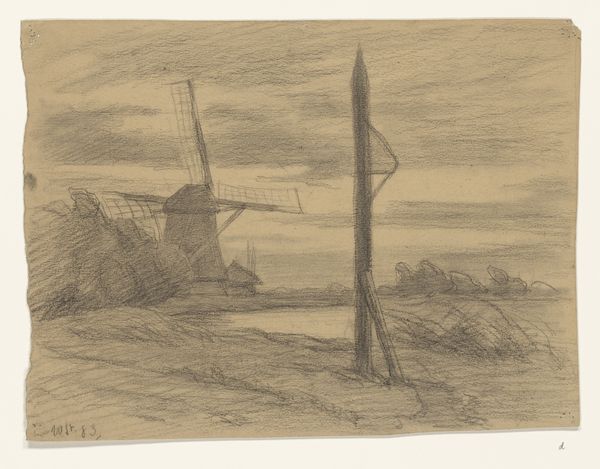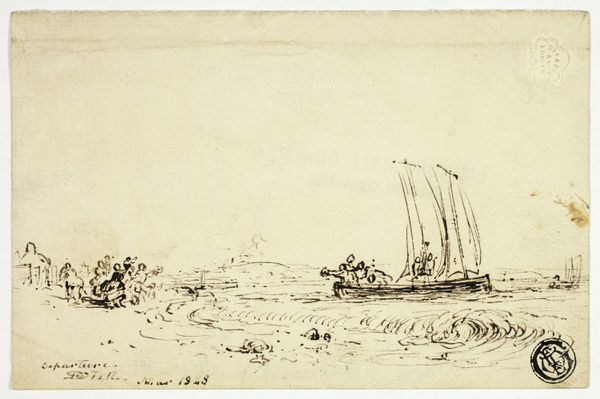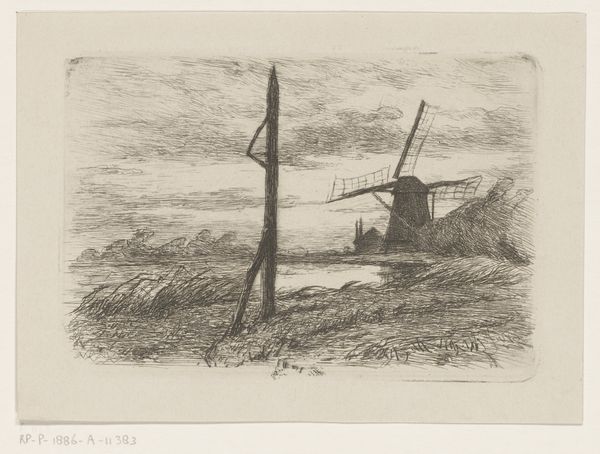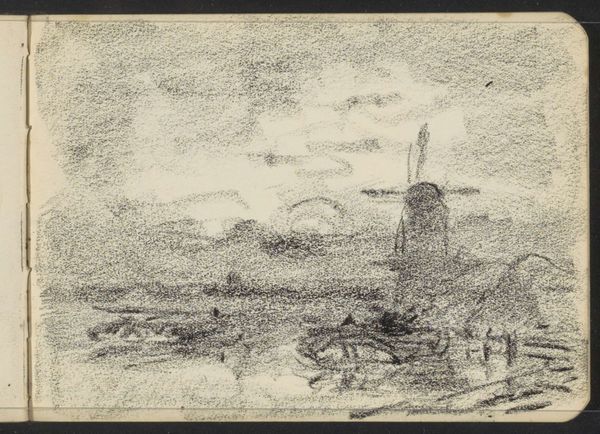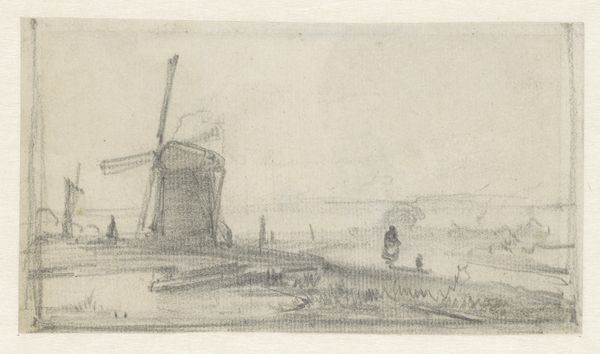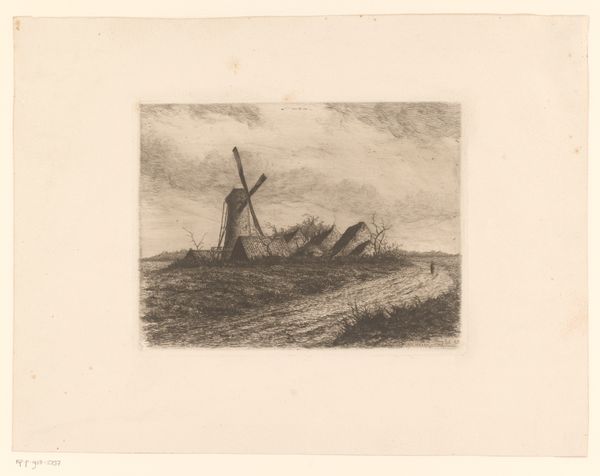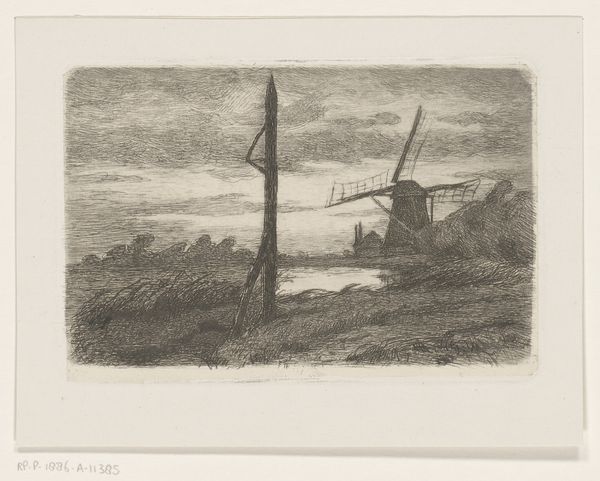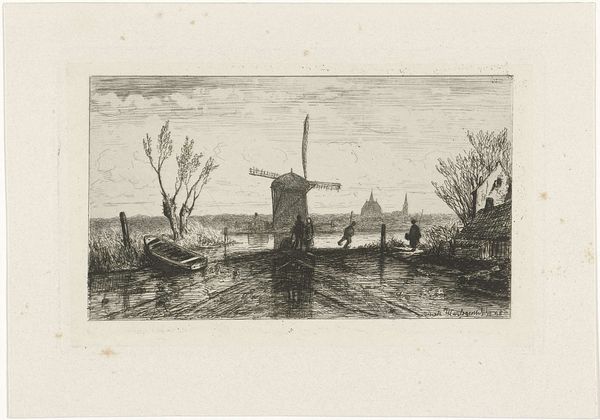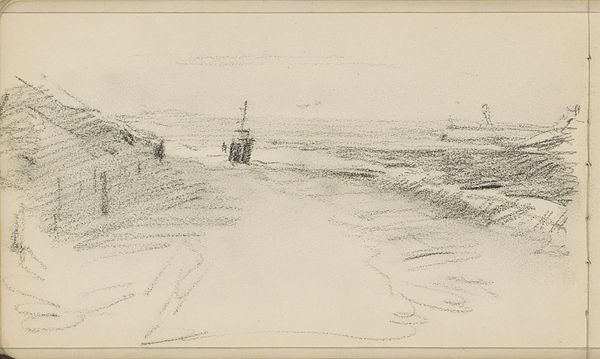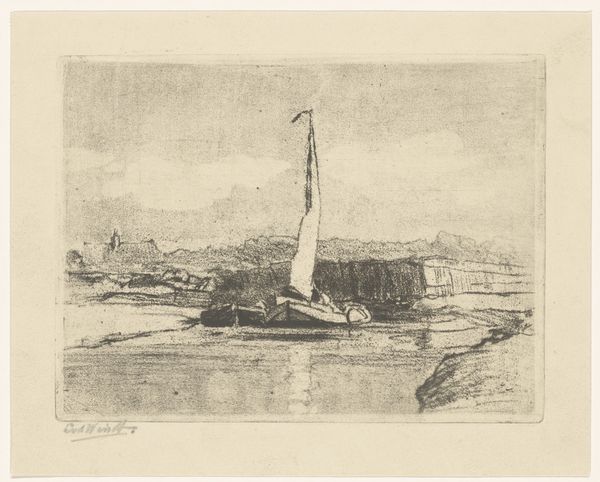
drawing, ink, pen
#
drawing
#
ink drawing
#
pen sketch
#
pencil sketch
#
landscape
#
etching
#
ink
#
romanticism
#
pen
Dimensions: 208 mm (height) x 350 mm (width) (bladmaal)
Curator: This drawing is by J.P. Møller, titled "En mølle. Parti på Volden i Kjøbenhavn," created in 1847. The medium is ink. Editor: What strikes me is the starkness, a near monochromatic simplicity, and those rapid, confident pen strokes! It evokes a sense of quiet melancholy, a stillness hanging over the landscape. Curator: I'm drawn to the evidence of its production. The use of ink, the visible layering of strokes - it speaks to the labor, the specific process through which the image comes into being. We can also examine its relationship to other ink drawings of the time and speculate about how materials were sourced and distributed. Editor: The windmill, of course, looms large, not merely as a structure but as a symbol of industry and human intervention in the natural world. Its silhouette dominates the skyline. Consider how windmills often represented prosperity but could also suggest the relentless, grinding passage of time. Curator: Precisely. And think about the social context! What was the function of windmills during the mid-19th century in Copenhagen? They were machines tied directly to labor, to the processing of grain. Was the artist perhaps considering issues around industrial development? Editor: Beyond its practical use, the windmill's persistent symbolism continues even now. It whispers of times gone by. And isn't there a certain romanticism present, viewing an element of the growing industrialized world presented almost as a quiet sentinel in the countryside? Curator: It's equally crucial to consider how such landscapes may have served different classes of consumers. Did this piece offer middle-class audiences, for example, access to rural imagery they may have been increasingly removed from? It asks who gets to look, and from what position. Editor: Yes, the cultural coding of landscape certainly tells of changing social structures, and landscape artworks certainly act as stages for expressing sentiments. We are all influenced by our visual landscape whether or not we reflect upon them. Curator: This work, viewed materially and socially, offers valuable information. I hadn't thought of its social function in such symbolic ways until now. Thank you. Editor: It's been wonderful seeing how you center the modes of production as an extension of its symbolic content! I'll continue to seek echoes in how historical contexts mirror our own preoccupations.
Comments
No comments
Be the first to comment and join the conversation on the ultimate creative platform.
